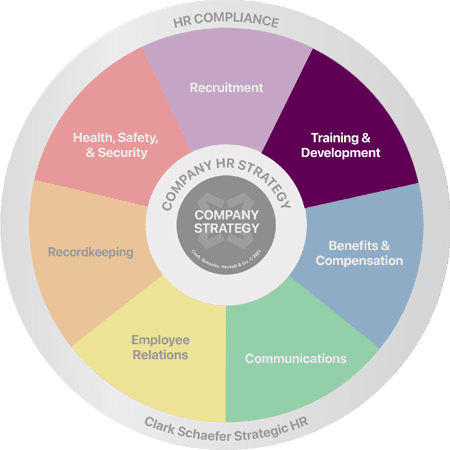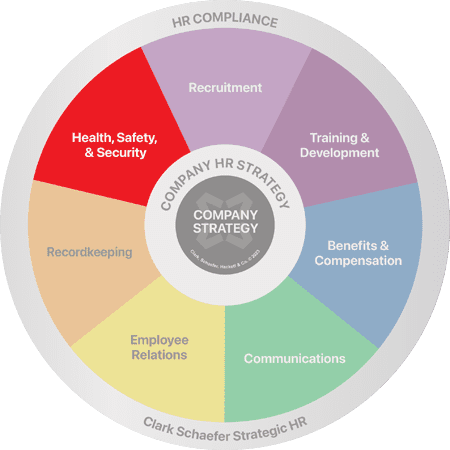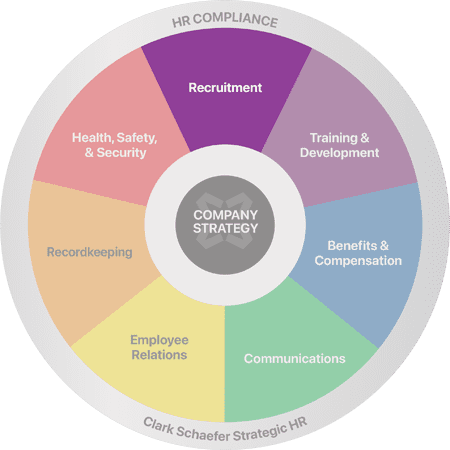Future-Proofing Your Workforce: The Power of Upskilling, Reskilling, and Skills-Based Hiring
Last Updatedin HR Strategy, Recruitment, Training & Development, Videos Question of the Week, Video
What To Do In An Active Shooter Incident
Last Updatedin Health, Safety & Security, Training & Development Question of the Week
Training Supervisors on How to Handle Workers’ Compensation Situations Effectively
Last Updatedin Health, Safety & Security, Training & Development Question of the Week
How Do I Successfully Coach Employees to Improve Performance?
Last Updatedin Employee Relations, Training & Development Question of the Week
Video: What is a DiSC Assessment and What is it Used For?
Last Updatedin Employee Relations, Training & Development, Videos Question of the Week, Video
Hiring Tips: How to Prevent a Bad Hire
Last Updatedin HR Strategy, Recruitment, Training & Development Question of the Week
Barriers To Effective Training and Development
Last Updatedin Training & Development Question of the Week
How Can I Get My Team More Engaged in Training?
Last Updatedin Training & Development Question of the Week
Are Evacuation Drills Mandatory to Meet OSHA Training Requirements?
Last Updatedin Health, Safety & Security, Training & Development Question of the Week
How To Handle Expired Prescription Drug Use In The Workplace?
Last Updatedin Health, Safety & Security, HR Compliance, Training & Development Question of the Week
What Can We Do to Make Onboarding Training Stick?
Last Updatedin Training & Development Question of the Week
How to Offer Training & Development for Remote Employees
Last Updatedin Training & Development Question of the Week
How to Re-Energize Your Team Through Training & Development
Last Updatedin Employee Relations, Training & Development Question of the Week
How Can I Use CliftonStrengths in my Organization?
Last Updatedin Training & Development Question of the Week
How Do I Conduct a Training Needs Analysis?
Last Updatedin Training & Development Question of the Week
New Manager Training Topics You Can’t Afford to Skip
Last Updatedin Training & Development Question of the Week
Why Harassment Training is Important
Last Updatedin Training & Development Question of the Week
Four Inclusive Decision-Making Principles
Last Updatedin Training & Development Question of the Week
Selecting a Learning Management System (LMS) for Your Organization
Last Updatedin Training & Development Question of the Week
Four Ways to Improve New Hire Onboarding and Training
Last Updatedin Training & Development Question of the Week
Expatriate Training and Development – Don’t Skip The Soft Skills!
Last Updatedin Training & Development Question of the Week
Why Is Harassment Training Important?
Last Updatedin Training & Development Question of the Week
What Are The Benefits of Providing a Mentoring Program?
Last Updatedin Training & Development Question of the Week
Employee Training: Online Vs. In-Person
Last Updatedin Training & Development Question of the Week
Key Components of an Onboarding Plan
Last Updatedin Training & Development Question of the Week
How Long Should Training Programs Be?
Last Updatedin Training & Development Question of the Week
What’s the difference between “Training” and “Development”?
Last Updatedin Training & Development Question of the Week
Training and Development: Are They the Same?
Last Updatedin Training & Development Question of the Week
Creating a Customer Service Culture
Last Updatedin Training & Development Question of the Week
How Do You Reinforce What Was Learned?
Last Updatedin Training & Development Question of the Week
Skipping Manager Training Is Too Big a Risk for What’s at Stake
Last Updatedin Training & Development Question of the Week
Developing Successful Training Programs
Last Updatedin Training & Development Question of the Week
How Can I Incorporate Career Development Into the Job?
Last Updatedin Training & Development Question of the Week
Designing an Assessment Center
Last Updatedin Training & Development Question of the Week
Solutions for Dysfunctional Teams
Last Updatedin Training & Development Question of the Week
Turning Conflict into Collaboration
Last Updatedin Training & Development Question of the Week
Contact Us
Clark Schaefer Strategic HR
10856 Reed Hartman Hwy
Suite 225
Cincinnati, OH 45242

Clark Schaefer Strategic HR is recognized by SHRM to offer Professional Development Credits (PDCs) for SHRM-CP® or SHRM-SCP® recertification activities.
The information provided on this website does not, and is not intended to, constitute legal advice; instead, all information, content, and materials available on this site are for general informational purposes only. Readers of this website should contact their attorney to obtain advice about their particular situation and relevant jurisdiction. This website contains links to other third-party websites. These links are only for the convenience of the reader, user or browser; Strategic HR does not recommend or endorse the contents of the third-party sites.




